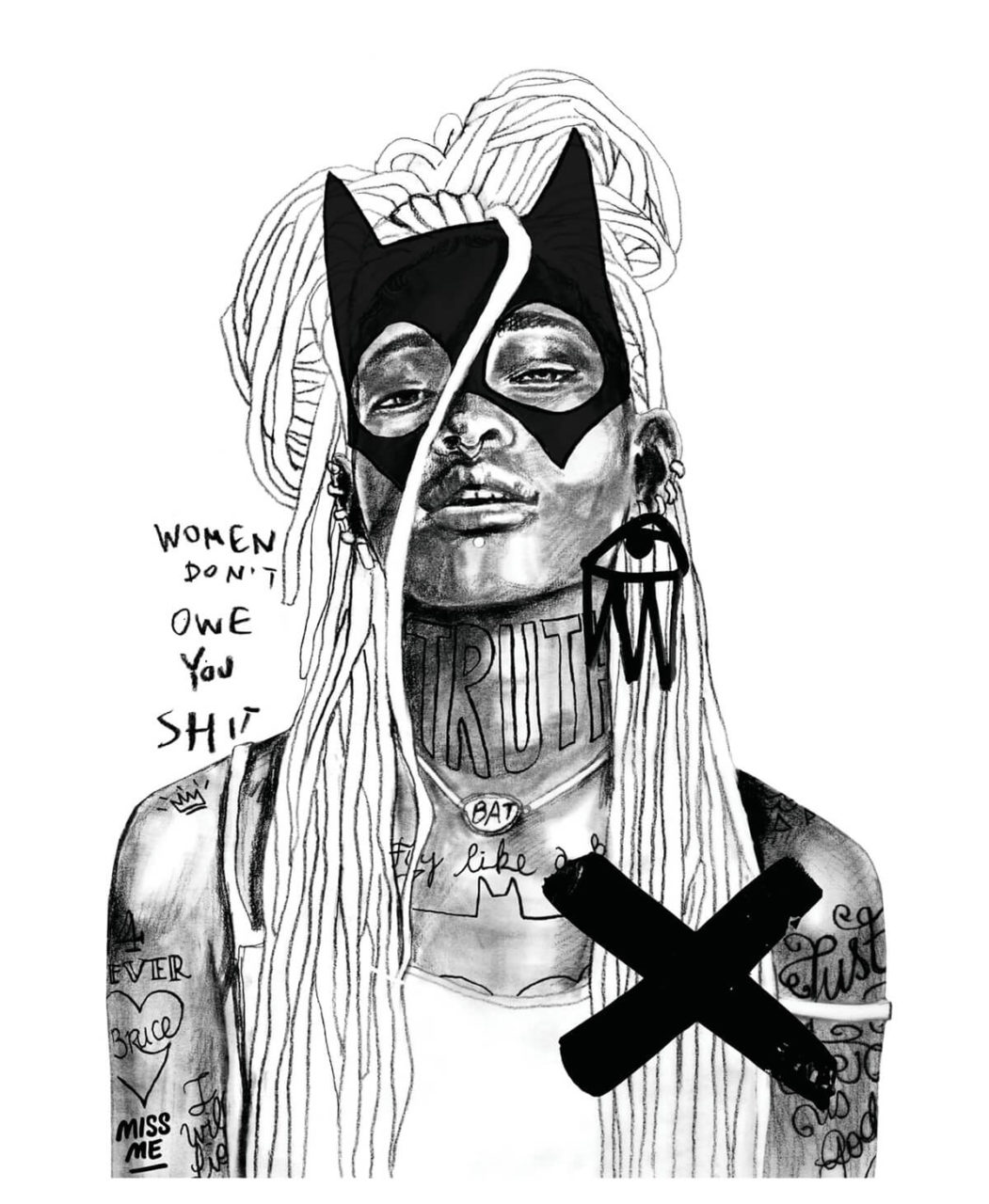Issue originnellement du monde la publicité, MissMe est une artiste de rue militante qui, par son art visible, revendique les corps féminins comme politique. À travers son style singulier, ses fresques et collages ne passent pas inaperçus dans les rues de Montréal !
Regardez son interview ci-dessous et visitez son site web ici.

« Batgirl » par MissMe
As part of this project, you generously donated to Maison Flora Tristan, an organization helping women. Can you tell us why this organization is important to you?
It’s an organization I’ve worked with on several occasions. I’ve donated to them in the past. It’s a safe space for women who are being abused. They also welcome their families, which is quite rare. They also help them get back on their feet which is primordial. There are unfortunately too few shelters and we don’t talk about them enough. I learned a lot by working with them. They often are the ones dealing with subjects society is trying to hide, problems today’s society is ashamed of. I always think society is as healthy as the weakest of us and so it is important to not only help but also talk about it. It causes more harm to dress it up in shame even more. This shelter does an amazing job and the women working there are highly devoted. This cause is very important to me, hence why I chose them. [Learn more about Maison Flora Tristan here.]
What is your main source of inspiration?
I mainly talk about my own experience. Everything I say starts, selfishly, with me, but it is the only thing I can talk about genuinely. Through my work, I then came to realize that own experience can resonate on a universal level, but everything was previously centered around myself. Things I have lived through or noticed, consequences from societies in which I grew up, what they told me versus how it made me feel and my response to that. My work is one of public psychoanalysis. I try to be as honest as possible with my experience which I live particularly strongly through my gender. Being a woman is something that has actually been quite complicated for me and on which I have been working on a lot. It gives me a very strong sense of belonging to the feminine gender which is essential to my work.
Do you find it more difficult working as a woman in street arts?
Not really. Since I do belong to this world, the artistic and Montreal world in general, I’m quite the chameleon in the different ways I have of expressing myself. I was only doing street arts at the beginning, and it had all these different little cliques, but I always mostly worked by myself. I never really felt the pressure. What I do, my field, is mostly male dominated, but it has been changing more and more recently with a general awareness and actions being put into place. I had to deal more with the “cliques”, groups of guys helping each other out. It’s not the fact that I’m a woman that bothers but rather what I talk about. I work in the street; I have strong opinions and I’m an activist. It’s not that common in Montreal and it was even less back when I started. That wasn’t the type of street art you would see. The art wasn’t any less valuable before, but when I came around there was this incomprehension from the people. Some didn’t really like or understand what I was doing, and still don’t today. Something happened, very publicly on social media, in the Montreal art world and an artist, who I really liked, bashed my work behind my back. He said something like, “What is she thinking. Does she really think she can be naked, publicly, and on top of that ask to be respected?” I was hallucinating. It’s 2021. So, yes, these types of clashes exist but that’s not why I do it. I think it actually validates what I do even more.
What’s the message you are aiming to get across through your artworks?
Dignity. I work for women, especially. It’s a conversation I have with myself which by extension becomes one I have with women. It’s not something I do for men. The fact that they hear this conversation, and it helps them understand, is just a bonus. It’s not my main objective or why I do it. What I’m interested in is that we can all free ourselves from all those internal struggles we keep, struggles we have with our own values. I want dignity, the right to talk, to be furious, to be different. Freedom to be ourselves.
Why do you stay anonymous?
I started hiding my face way before this whole vandal series. It allows for easier identity and is liberating. I’ve hidden a lot of women’s faces in my art, photoshoots and videos. Faces are a social identity but they’re not who you are. It’s the recognition of where you are from, what family, heritage, religion, culture you are part of, but identity is a lot more than that. Not having a distinctive recognizable face makes it easier to identify with me. I’m like a cartoon. And what matters is not who I am but what I have to say, my statement, my emotion. It’s not necessarily a contradiction.
The Batgirl you created for us is very special. What were you trying to show with this version?
I wanted to show someone who’s taking charge of things when they’re not right. They can say, “Ok there are laws and police, but f*** that, I’ll do it.” Especially a girl, who’s doing this physically, is someone who’s marginalized. That’s why I did her like this. This Batgirl makes sense to me, she’s irreverent. I think that I identify with her, I’m like this too, I hide, I do “illegal” things – we’re not talking Batgirl style here – but I act in line with my values and strong opinions. If there was a need to go against social rules or laws, I’d do it. This notion of justice goes way beyond appearances and that’s why I created her as I did. I actually based her off Willow Smith. Batgirl is not all sweet and blonde and thin, she’s someone who doesn’t identify with this and what society expects you to be. She says, “I disagree, that’s not me, I’m something else.” For me, two people I hesitated between that represented this personality were Jessie Reyez and Willow Smith.
What would you say to a young woman wanting to become an artist?
I’d say ignore whatever you’ve been taught and most of all don’t try to fit in and please. Go where it’s ugly, where it bothers. That’s where you will have something to say and people will identify with it. Everything else has been done, it’s everywhere, it’s fake and causes more harm than good. We need to heal, to go deep. That’s what art is to me, getting to the bottom of true things to face dirt and ugliness, get these raw emotions out. That’s what I do, or at least try to.
